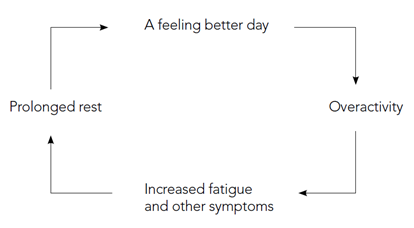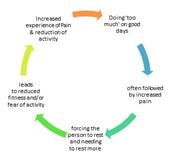What is Hypermobility?
Hypermobility is increased flexibility. It is caused by laxity in the ligaments, which results in the joints being able to extend beyond the normal range of movement.
For many people they do not experience any problems or have any impact on their daily function or experience any problems, and they may be unaware of their hypermobility.
There is a large spectrum of hypermobility and it has benefits/drawbacks particularly as children start to grow and change.
Common difficulties flexible children experience
Due to hypermobility and reduced stability in joints children can experience:
- Reduced strength in hands and fingers, difficulties using scissors, and completing self care activities including buttons, shoelaces, use of cutlery.
- Handwriting difficulties—experience pain, when writing, struggle to keep up with written work with the quality reducing quickly over times, awkward pencil grasp, may hold the writing utensil tightly and press hard when writing, drawing, colouring
- Clumsy, falling frequently, difficulties with hopping /jumping
- As a consequence this can lead to:
- Fidgeting, struggle to remain seated for prolong periods
- Low confidence / not wanting to try new things
Benefits of Increased Flexibility:
For many flexibility and hypermobility is an asset e.g. for participation in sports including ballet, gymnastics, swimming, and cricket.
Some athletes, such as dancers and gymnasts, train hard to achieve hypermobility around certain joints.

The two main areas of concern are:
PAIN...
- A big worry for your child, parents and teachers. Mild pain and discomfort can be expected when exercising and is due to muscle fatigue.
- Pain is common in lower limb joints and within the hands and wrists particularly when writing.
and FATIGUE...
- Common part of childhood- however it can be more noticeable in children who are more flexible as they have to work harder, through maintaining a seated position; tightness of their grasps, and increased focus in what they are doing.
Strategies
- Many children adopt a boom and bust approach to activity (period of intense activity followed by a crash with low levels of activity to recover, as a result of fatigue and pain).
- Planning is important to spread the demands throughout the day, use of a diary, schedule and timetables can help with this.
- Exercising in the morning may be preferable than later in the day
- Active life is important to maintain muscle strength.
- Low impact activities e.g. yoga/swimming/cycling/gym,
- Regular breaks and Rest periods, particularly with repetitive activities
- Maintain a healthy sleep pattern and a good diet for muscle rest and recovery.

How can I support my child?
Pacing:
Pacing is a way of gradually increasing the amount your child does in small planned steps. Gradually increase the time spent on the task, until your child can complete the whole activity, without getting too tired or experiencing too much pain.
- Choose an activity they want to do more of, such as walking, swimming, playing, writing
- Find the minimum amount of time they can comfortably participate for, even on a bad day before pain and fatigue.
- Practice doing this activity, preferably every day for the specified time. This will help to increase their fitness level. For example, 30 minutes per day (split into 3x10 minute sessions) for 1 week. Remember this should be child specific and can be more or less that then example, remember to take into consideration pain and fatigue and adjust time duration as required.
- Allow your child to take short, regular rest breaks throughout the activity , before an increase in pain or tiredness occurs. You can do this by breaking the activity into parts and taking a short rest at each interval
- When they feel comfortable, increase the time they spend doing the activity. For example, increase to 40 minutes (split into 4x10 minute sessions). Practice this until it is easy for them to achieve.
 Small increases are better than large increases. Large increases can set them off on the over activity / under activity cycle again.
Small increases are better than large increases. Large increases can set them off on the over activity / under activity cycle again. - Increase the time they spend doing the activity until they have reached the goal or level of participation that is acceptable for them.
There are strategies / equipment available to support skills and help reduce pain and fatigue including:
Posture:
Some children can struggle to maintain a functional sitting position due to reduced postural stability. Your child may benefit from equipment to help support there posture when sitting at the table for example
- Posture pack
- Move ‘n’ Sit cushion
- Writing Desk Top Aids
- Ensure your child is sat with hips, knees and ankles at 90 degrees to provide a stabile base of support.
- The balance worksheets of the Fizzy Programme are also suitable for children to complete to develop their core stability which can support the development of posture.
Handwriting:
If your child is holding their pencil tightly and pressing hard when writing. Their control and speed of handwriting can be impacted. Strategies may include:
- Pencil grips, stabilo pens / pencils,
- Desk top writing aids
- Use of laptop to record written work at home and school where practical - touch typing practice to support typing skills
- Word predictor programmes, scribe, provision of handouts, rest periods, extra time to complete written work,
- Hand strengthening exercises using theraputty
Scissor Skills:
There are a variety of ultra light weight self opening scissors . Including long loop scissors and easi grip self opening scissors, to help reduce pain and fatigue when cutting.
Cutlery:
Children may find holding cutlery difficult and may benefit from larger handled cutlery or Caring Cutlery.
Dressing:
- Clothing with minimal fastenings, particularly on P.E days.
- Velcro instead of buttons, marks and spencer's have an easy dressing range for school uniforms.
- No-tie shoe laces
School:
- Take rest breaks if walking
- Use smaller bags/leave bags in an area, or have a wheeled backpack which can be worn or when tired pulled along / or have a trolley rather than a bag.
- Don’t carry more than 10% of the child’s body weight.
- Cross body bag or rucksack bag on both shoulders is preferred.
- Pacing of physical activities within school and clubs and outside school activities to allow rest.
- Parents and education staff may also find the https://theschooltoolkit.org/ a good resource.
Resources / Equipment:
Remember:
THERE IS A DIFFERENCE BETWEEN BEING HYPERMOBILE (FLEXIBLE) AND HAVING an inherited genetic HYPERMOBILITY SYNDROME.
Most kids are just hypermobile and that’s ok .
The management of both these types of problem is very similar.
To view this page as a downloadable PDF please click
here.